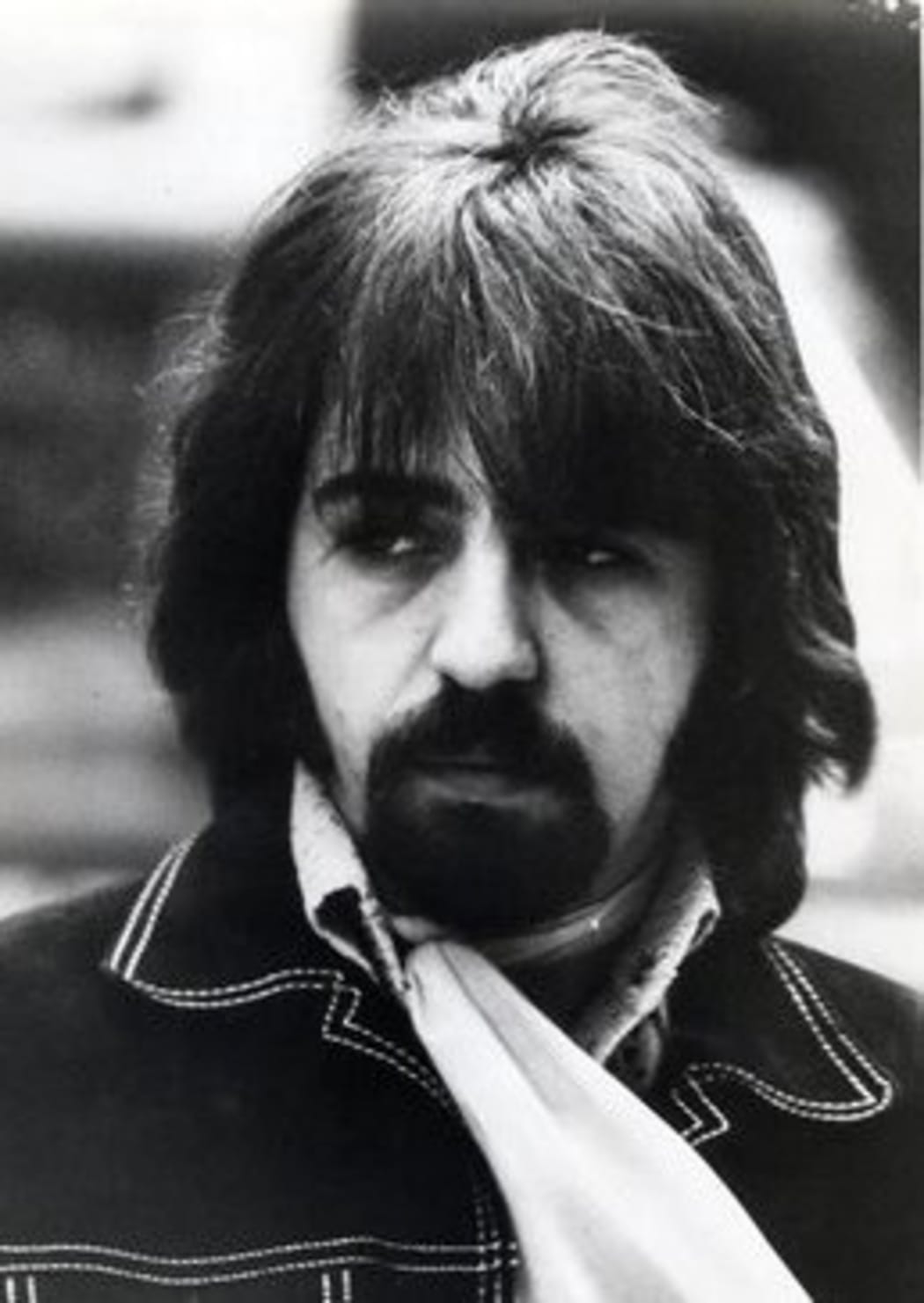
The Byrds in 1971. From left to right - Roger McGuinn, Skip Battin, Clarence White & Gene Parsons Photo: Joost Evers
Clarence White revolutionized the role of the guitar in Bluegrass, played on sessions for many of the top artists of the 60's and 70's and was a member of the influential rock band The Byrds.
Featuring new interviews with his friends and fellow musicians Gene Parsons and Ry Cooder, this new radio documentary from RNZ takes a look at the brilliant musicianship and tragically short life of Clarence White.
According to Ry Cooder you can compare the guitar playing of Clarence White to the cornet playing of legendary Jazz musician Bix Biderebecke.
“They talk about Bix as a guy who played connected lines with a beautiful, picturesque kind of feeling like Clarence has” he told me over the phone.
Cooder, who is about as respected a musician as you can find, is one of many professional guitarists who hold Clarence White in the highest esteem.
In a career that saw him revolutionise the role of the guitar in Bluegrass music, record guitar parts for some of the most well known musicians of the 60’s and 70’s and during his 5 year stint as a member of The Byrds, help develop Country-rock, White made a lasting and unique impact on American popular music.
Yet, unlike his contemporeries such as Gram Parsons, White has not always got the recognition he deserves and since his tragic death in a road accident aged just 29, he has somewhat faded from view.

Clarence, Roland and Eric White. Photo: Supplied by Brandon Adkins
Clarence Joseph LeBlanc was born June 7th 1944 in Lewiston, Maine. The third child of French-Canadian parents who had moved south of the border from New Brunswick, anglicising their name to White along the way. Like many American families in the first half of the 20th Century, the Whites made their way to California.
From the age of 10 Clarence was playing in a family Bluegrass band which achieved success under the name The Kentucky Colonels.
The Kentucky Colonels playing on the Andy Griffith Show in 1961.
It was in the early 1960’s whilst the Colonels were playing at the legendary Ash Grove folk club in Santa Monica, California that Clarence’s playing caught the ear of Ry Cooder.
“He had advanced into something that I had never seen before” says Cooder. “I was fascinated and so was everybody else who sat and watched.”
One of the other musicians who were amazed by Clarence was Jerry Garcia, who would follow the Colonels to the east coast of the United States and later found fame as the guitarist and singer for The Grateful Dead.
Then there was a young blues guitarist who admired Clarence’s playing but only got to talk to him years later.
According to Gene Parsons, Clarence’s friend, collaborator and bandmate in The Byrds, he and Clarence were backstage at a club in Hollywood in the late 1960’s when a knock came at the door and a well dressed man asked if Clarence was around.
“I said ‘Clarence, there’s a guy here to see ya!’” Parsons recalled. “I said ‘what’s your name?’, he says ‘ Jimi Hendrix’. I said ‘It’s Jimi Hendrix!’ and Clarence said ‘Yeah….Let him in.’ It turns out Jimi Hendrix was a Clarence White fan!”
In 1965, with the advent of Folk-Rock, the Kentucky Colonels were no longer able to support themselves playing Bluegrass. Clarence, who by this point had a family to support, picked up a Fender Telecaster guitar and went to work as a session musician.
Before long, he was asked by Gene Parson’s to join his band Nashville West and in a couple of years, both Clarence and Gene ended up playing in The Byrds, one of the biggest and most influential bands to come from Los Angeles in the 1960’s.
Clarence’s contributions to albums like Sweetheart of The Rodeo and (Untitled) cemented his position as one of the most innovative guitarists of the era and the driving force behind turning The Byrds into an impressive live act.
He and Parsons also made some technical innovations to the electric guitar. By utilising parts from a pedal steel guitar, Parsons modified White’s telecaster so he could bend the B String a whole note, which went a long way towards helping Clarence achieve the blend of Country and Rock guitar styles he was going for.
The String Bender, as they called it, has had a lasting effect on guitarists from many different genres and the mechanism has been used by guitarists such as Jimmy Page, Brad Paisley and Jack White.
During his time with The Byrds Clarence also worked as a session musician and played on records by artists like Randy Newman, Linda Rondstadt, Arlo Guthrie, The Monkees and Jackson Browne.
His skill as a guitarist and his genial personality made him very much in demand.
“Clarence was soft spoken, very kind, very confident and he had a quirky sense of humour” Says Gene. “He had a very well developed moral compass.”
By 1973 the Byrds were no longer functioning as a band and White jumped ship soon after the band’s frontman, and by that point sole founding member, Roger McGuinn announced that he had reformed the band’s original line-up (which did not include Clarence) to record a new album.

Photo: Supplied
Not one to sit around, Clarence started a Bluegrass supergroup called Muleskinner and began recording a solo album, bringing in Ry Cooder to play slide guitar on one track.
But the album was never finished. After a show with his brothers in the desert town of Palmdale, just outside Los Angeles, Clarence was hit by a drunk driver as he loaded his equipment into his car. He died in hospital the next morning.
His funeral was attended by his former bandmates and many of those who had played with him. Former Byrd Gram Parsons lead a sing along at the graveside.
But tragedy was not done with the White family. Clarence’s wife Susie had a series of car accidents of her own which culminated in a horrific 1981 crash that killed her as well as her and Clarence’s son Bradley. The accident left Michelle, the couple’s daughter and orphan at just 15 and left her to be raised by her mother’s sister and her husband in Kentucky.
In my conversation with Michelle’s son Brandon he detailed a lot of what the family had been through as a result of losing both of Michelle’s parents and her brother as well as alleged financial misdirection from various parties that left Michelle and her children with little to show for Clarence’s talent and hard work.
“It’s just as much sorrow as it is pride” he told me.
Gene Parsons gave up on music for a few years, asking Warner records to release him from his contract, but after some time he slowly started writing and recording again. These days he still builds String Benders and is getting ready to release a memoir.
It’s hard to say what Clarence White would have done had he lived but for years after he died and as The Byrds fell out of fashion, he seemed destined to become somewhat obscure, with his name confined to Byrds biographies and niche Bluegrass publications.
Despite the huge effect on rock music that The Byrds had and contemporaries such as Gram Parsons being elevated to the level rock and roll legends, Clarence seemed to fade from the collective conscience.
Yet, thankfully he’s seen somewhat of a rediscovery in recent years along with a rise in interest in American roots music and Bluegrass.
Over 50 years since his death, Clarence’s work is influencing modern guitar heroes with younger Bluegrass stars like Billy Strings and Molly Tuttle citing White as an inspiration.
Hopefully Clarence is on the way to receiving the recognition that his peers, collaborators and those fans who are familiar with him all feel he richly deserves.
Below is a playlist of some of the music used in this piece.

